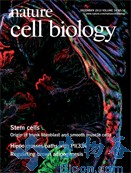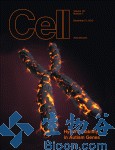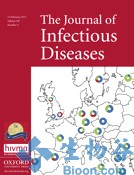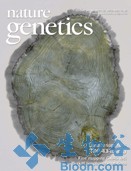PNAS:Polycomb复合物影响肿瘤生长的新机制
2013-02-07 遗传与发育生物学研究所 PNAS
表观遗传调控因子Polycomb复合物蛋白(PcG)被认为与多种癌症的发生有着极大的相关性。Rnf2作为polycomb复合物1(PRC1)中主要的E3连接酶,在多种肿瘤组织中表达水平明显上升。Rnf2与肿瘤发生及发展有着怎样的关系,至今一直是个没有解决的问题。 中科院遗传发育所张建研究组以肿瘤细胞系及肿瘤组织为模型,发现Rnf2能够通过催化肿瘤抑制因子p53的泛素化促进其降解。在多种细胞中对R
表观遗传调控因子Polycomb复合物蛋白(PcG)被认为与多种癌症的发生有着极大的相关性。Rnf2作为polycomb复合物1(PRC1)中主要的E3连接酶,在多种肿瘤组织中表达水平明显上升。Rnf2与肿瘤发生及发展有着怎样的关系,至今一直是个没有解决的问题。
中科院遗传发育所张建研究组以肿瘤细胞系及肿瘤组织为模型,发现Rnf2能够通过催化肿瘤抑制因子p53的泛素化促进其降解。在多种细胞中对Rnf2的调控活性进行检测发现,Rnf2仅在某些细胞中调控p53的稳定性,如生殖细胞癌等。体外培养的生殖细胞肿瘤中对Rnf2进行敲降后检测到明显的凋亡细胞,而同时对p53进行敲降能抑制凋亡发生。此外,下调Rnf2表达能显着抑制体外或体内肿瘤细胞的生长。对卵巢癌组织芯片中Rnf2的表达水平进行分析更显示了Rnf2的高表达与p53的下调具有相关性。这些结果表明Rnf2作为一个新的p53泛素化连接酶,通过在特定细胞中调控p53的蛋白稳定性影响其功能。这一发现也提示了Rnf2作为一个癌症特异性治疗靶点的可能性。
该研究结果于1月14日在线发表于PNAS (doi:10.1073/pnas.1211604110)。张建研究组博士研究生苏文静为第一作者,该研究得到了中科院、科技部和国家自然科学基金委的资助。

doi: 10.1073/pnas.1211604110
PMC:
PMID:
Wen-jing Sua,b, Jun-shun Fanga, Feng Chenga,b, Chao Liua, Fang Zhoua, and Jian Zhanga,1
Large numbers of studies have focused on the posttranslational regulation of p53 activity. One of the best-known negative regulators for p53 is MDM2, an E3 ubiquitin ligase that promotes p53 degradation through proteasome degradation pathways. Additional E3 ligases have also been reported to negatively regulate p53. However, whether these E3 ligases have distinct/overlapping roles in the regulation of p53 is largely unknown. In this study, we identify RNF2 (ring finger protein 2) as an E3 ligase that targets p53 for degradation. The E3 ligase activity of RNF2 requires Bmi1 protein, a component of the polycomb group (PcG) complex. The up-regulation of p53 does not affect RNF2 expression. Unlike Mdm2, RNF2 only degrades p53 in selective cell lines, such as those from germ-cell tumors. The knockdown of RNF2 induces apoptosis, which can be rescued through the reduction of p53 expression. Moreover, the down-regulation of RNF2 expression in germ-cell tumors significantly reduces tumor cell growth, while the simultaneous down-regulation of both genes restores tumor cell growth in vitro and in tumor xenograft models. Furthermore, a reverse correlation between RNF2 and p53 expression was detected in human ovarian cancer tissues. Together, these results indicate that RNF2 is an E3 ligase for p53 degradation in selective cells, implicating RNF2 as a therapeutic target to restore tumor suppression through p53 in certain tumor cells.
本网站所有内容来源注明为“梅斯医学”或“MedSci原创”的文字、图片和音视频资料,版权均属于梅斯医学所有。非经授权,任何媒体、网站或个人不得转载,授权转载时须注明来源为“梅斯医学”。其它来源的文章系转载文章,或“梅斯号”自媒体发布的文章,仅系出于传递更多信息之目的,本站仅负责审核内容合规,其内容不代表本站立场,本站不负责内容的准确性和版权。如果存在侵权、或不希望被转载的媒体或个人可与我们联系,我们将立即进行删除处理。
在此留言













#PNAS#
47
#复合物#
66